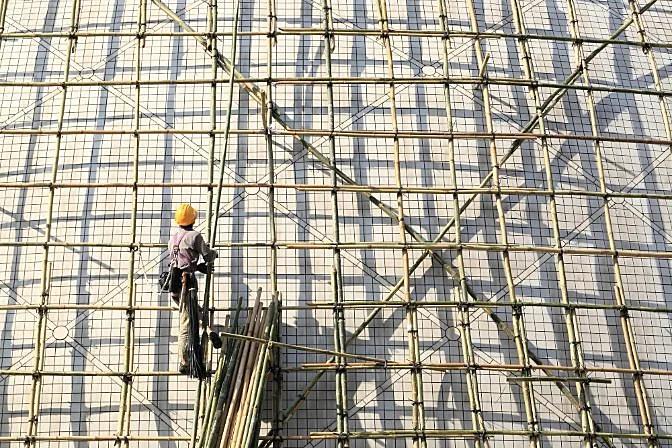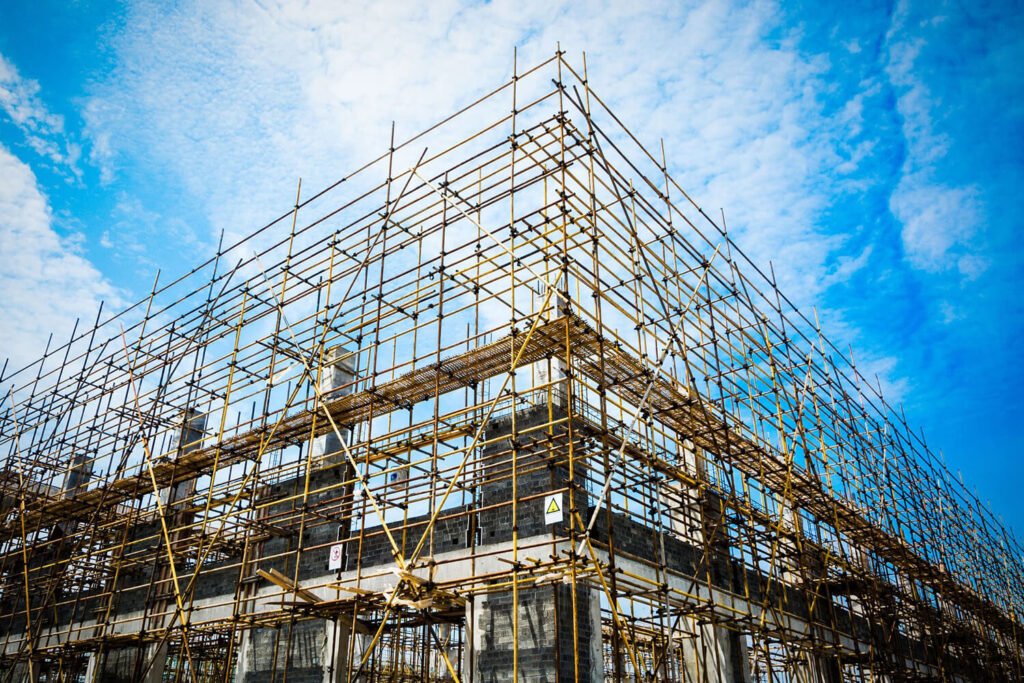A Comprehensive Guide to the Necessary Attributes of Scaffolding in Modern Building And Construction
The landscape of modern construction progressively relies on reliable scaffolding systems that prioritize efficiency, security, and advancement. As projects expand in intricacy, recognizing the important attributes of scaffolding becomes important for guaranteeing employee security and maximizing task timelines. This overview explores various kinds of scaffolding, highlights vital safety and security functions, and examines product innovations that contribute to performance and sustainability. The ramifications of these elements prolong far past plain building and construction practices, triggering a closer look at exactly how they influence total project success and worker health.
Sorts Of Scaffolding
Although scaffolding systems can differ widely in design and application, they typically come under several unique classifications that deal with different building needs - Scaffolding. The most typical types consist of sustained scaffolding, put on hold scaffolding, and rolling scaffolding
Supported scaffolding is composed of systems sustained by a framework of poles, which supply a raised and steady working surface. This type is typically made use of for tasks that require substantial elevation, such as bricklaying or exterior painting.
Suspended scaffolding, alternatively, is utilized for jobs needing accessibility to high altitudes, such as cleaning or fixing building facades. This system hangs from one more framework or a roof, enabling workers to reduced or raise the platform as needed.
Moving scaffolding attributes wheels that enable very easy movement throughout a job site. It is especially useful for tasks that need constant moving, such as interior work in big rooms.
Each kind of scaffolding is made with particular applications in mind, ensuring that building tasks can be performed effectively and effectively. Comprehending these classifications is essential for selecting the suitable scaffolding system to meet both job requirements and site conditions.
Trick Security Features
Safety and security is vital in scaffolding systems, as the prospective threats related to operating at elevations can bring about significant crashes otherwise appropriately managed. Trick security features are important to make certain the well-being of workers and the honesty of the building website.
Firstly, guardrails are crucial. These obstacles offer a physical secure versus drops, significantly lowering the danger of serious injuries. Additionally, toe boards are frequently utilized to stop tools and materials from dropping off the scaffold, securing employees listed below.
One more essential component is making use of non-slip surfaces on platforms. This attribute boosts hold, specifically in damaging climate conditions, therefore reducing the likelihood of falls and slips. Furthermore, gain access to ladders need to be firmly positioned to promote risk-free entrance and exit from the scaffold.
Regular evaluations and maintenance of scaffolding systems are also critical. These evaluations guarantee that all parts remain in great problem and working appropriately, resolving any type of wear or damages without delay.
Finally, appropriate training for all employees entailed in scaffolding procedures is necessary to make certain that they recognize safety procedures and can determine possible risks. Scaffolding. Jointly, these features create a more secure working environment and significantly alleviate risks related to scaffolding
Material Innovations
Improvements in product scientific research have dramatically influenced the scaffolding industry, boosting both safety and performance in modern building. The intro of high-strength steel and aluminum alloys moved here has changed conventional scaffolding systems. These materials are not only lighter, making them simpler to transport and construct, but also offer remarkable load-bearing capacities. This leads to scaffolding structures that can sustain greater weights while reducing the danger of collapse.
Additionally, cutting-edge composite products, such as fiberglass-reinforced plastics, have actually arised as sensible choices. These materials are resistant to rust and ecological destruction, thus extending the life-span of scaffolding systems, particularly in harsh climate condition. Making use of such products adds to lower upkeep expenses and guarantees constant efficiency with time.


Style Considerations
Considering the complexities of modern building jobs, reliable scaffolding design is paramount to making certain both performance and security. Design considerations need to incorporate various factors, consisting of lots ability, height, and the specific demands of the construction website. Each task provides one-of-a-kind challenges, demanding an adaptable approach to scaffolding systems that can adjust to differing problems.
Structural stability is crucial; therefore, engineers need to calculate the lots that the scaffolding will support, consisting of employees, products, and tools. The option of products plays a vital duty in guaranteeing the scaffolding can stand up to these tons while remaining light-weight and sturdy. Additionally, the style needs to enable very easy access and egress, promoting the smooth movement of workers and products.
Safety and security functions, such as guardrails and non-slip surfaces, must be included to minimize dangers of mishaps. The format has to consider the surrounding environment, including adjacent frameworks and prospective hazards. By dealing with these style factors to consider, construction firms can enhance the performance of scaffolding systems and promote a much safer working atmosphere, ultimately contributing to the general success of the job.
Maintenance and Evaluations
The effectiveness of scaffolding systems expands past first style and application; continuous maintenance and regular inspections are essential to guaranteeing their continued efficiency and safety and security throughout the period of a task. Regular examinations should be performed by qualified workers to recognize any type of signs of wear, damage, or instability that could endanger the stability scaffolding green tag of the scaffolding.
Maintenance protocols should include routine checks of structural parts, such as planks, structures, and fittings, ensuring that all components continue to be secure and cost-free from corrosion or other wear and tear. Furthermore, the functionality of safety and security functions, such as guardrails and toe boards, need to be analyzed to guarantee conformity with safety regulations.
Documents of all inspections and upkeep tasks is critical for responsibility and regulative conformity. A systematic technique to record-keeping not only aids in tracking the problem of the scaffolding but here are the findings likewise provides necessary proof in case of a case.
Eventually, establishing an extensive upkeep and assessment routine will dramatically reduce the risk of crashes and boost the general safety and security of the building website. By prioritizing these techniques, building and construction supervisors can protect employees and maintain the project's stability.

Conclusion
Finally, the crucial features of scaffolding in modern building and construction include a variety of critical aspects, including varied types, essential security devices, product advancements, and thoughtful layout considerations. Emphasizing safety and security via guardrails and non-slip surface areas, together with innovations in materials like high-strength steel, improves both performance and sustainability. Furthermore, routine maintenance and inspections are vital for making sure structural stability and security on building and construction websites, inevitably helping with reliable project implementation and promoting the health of employees.
The landscape of contemporary building significantly relies on reliable scaffolding systems that focus on safety and security, development, and efficiency.Developments in product science have considerably affected the scaffolding sector, improving both safety and security and efficiency in modern building and construction. Overall, these material technologies not just boost the performance and security of scaffolding systems but likewise line up with the industry's press towards sustainability, as lots of contemporary materials are made to be much more environmentally pleasant.
Thinking about the intricacies of modern-day building projects, reliable scaffolding design is critical to making certain both capability and safety.In conclusion, the important attributes of scaffolding in contemporary construction include an array of essential elements, including varied kinds, key safety systems, material technologies, and thoughtful style considerations.